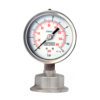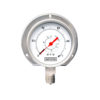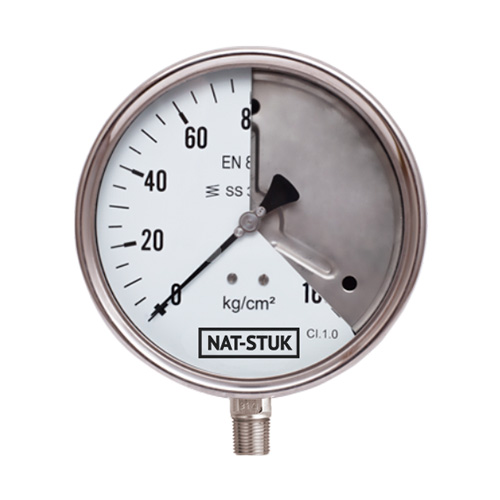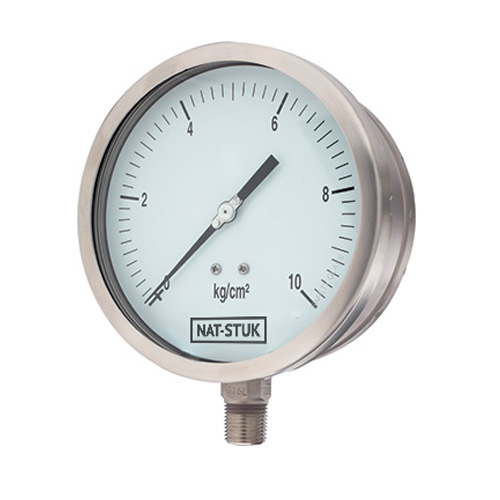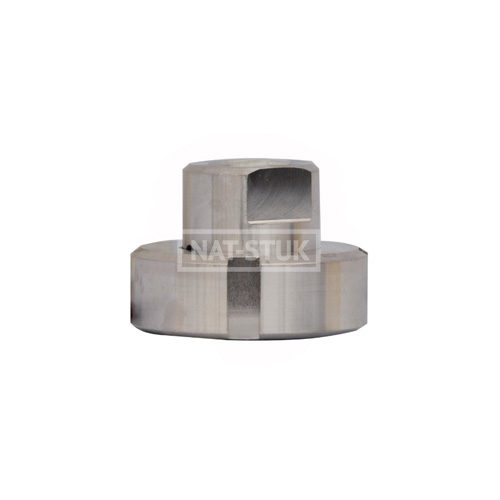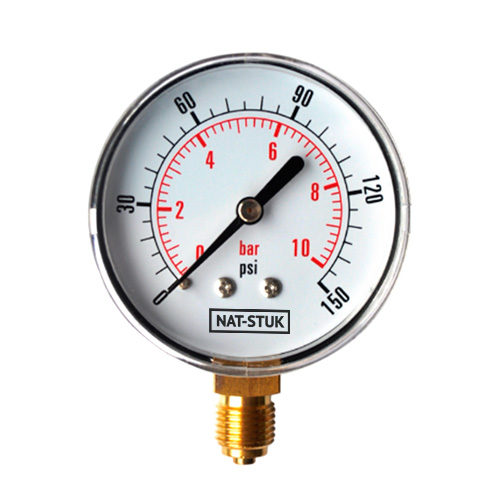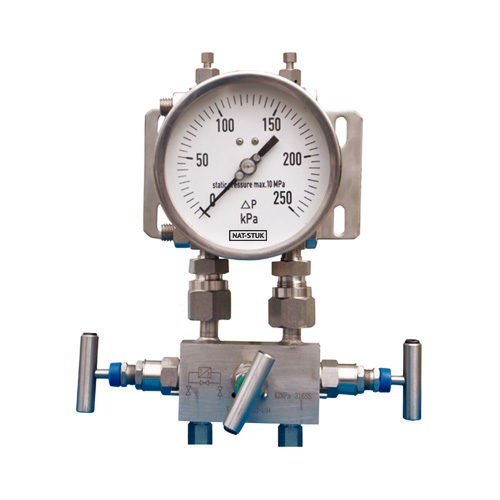Solid Front Pressure Gauge
Solid Front Pressure Gauge has a safety barriers inside it, that is used to release the inner pressure caused by break of the elastic element when over loaded. Thus security of personnel establishment is ensured. Solid front pressure gauge has solid front, and it can be filled with liquid. It is available in the harsh and corrosive conditions. It’s particular safe with gaseous media.
Specifications
Dial sizes: 2.5″, 4″, 6″(63, 100 & 150 mm)
Case: 304 Stainless Steel case, with solid front wall and blow-out back
Wetted parts: 316 Stainless Steel
Lens: Laminated Safety Glass
Pressure Range: Vac to 15,000 psi/Bar
Description
Solid Front Pressure Gauge has a safety barriers inside it, that is used to release the inner pressure caused by break of the elastic element when over loaded. Thus security of personnel establishment is ensured. Solid front pressure gauge has solid front, and it can be filled with liquid. It is available in the harsh and corrosive conditions. It’s particular safe with gaseous media.
Specifications
Sizes: 2.5″, 4″, 6″(63, 100 & 150 mm)
Accuracy: Dial 2.5”: 1.6% of full scale
Dial 4” & 6: 1% of full scale
Case and ring: 304 Stainless Steel matte finished, with solid front wall and blow-out back
Lens: Laminated safety glass
Wetted parts: 316 Stainless Steel
Operating Temperature: Ambient: -20 to 65°C (-4°F to 149°F)
Process fluid: max 65°C (149°F)
Dial: Aluminum with black & red markings
Pointer: Black aluminum, Dial 4” & 6″: micrometer adjustable
Connection: 1/4″ or 1/2″ NPT or BSP bottom
Ranges: Vacuum to 15,000 psi/Bar
Protection degree: IP65
Liquid filling: Glycerin or dry fill able execution
Protection
– If pressure gauges are to be used for steam service, a siphon tube filled with water must be installed between gauge and line to prevent live steam from entering the Bourdon tube.
– A gauge cock should be installed in the pressure line. This might be the standard shut-off valve or a needle valve for throttling pressure pulses.
– If severe pulsation exists, the gauge should be protected by adding a throttling orifice
screw in the gauge socket or by addition of a pulsation damper, such as a snubber.
– A diaphragm seal should be used in applications where process media should not come in contact with gauge.
We invite you to check out our post: When should you use liquid-filled pressure gauges?
Follow us on Twitter and Instagram

